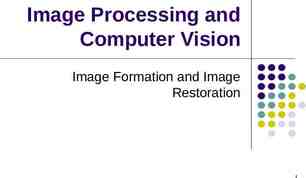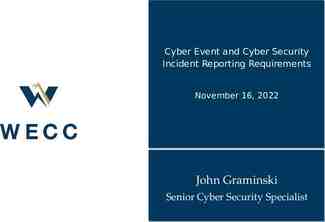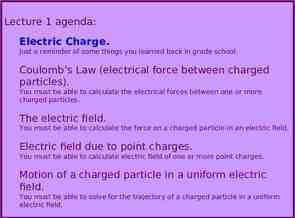Time and Payroll HR Conference 2005
33 Slides765.50 KB
Time and Payroll HR Conference 2005
Topics Upcoming People First enhancements Time Entry Process – Current Process Military Employees – Process to ensure accurate pay Correlation of Timesheets to HR Fields Leave Balance Adjustments Flexible Work Schedule OT Election FLSA Special Compensation Gross Pay History (Pre-Tax) Recurring and One-Time Deduction Screens Supplemental Pay, One-Time Regular Payroll Pay and Awards screens CJIP Payroll “New” Stop/Cancel Payment Functionality Prelim Payroll Input Files Payroll Deadlines
People First – Time and Payroll Upcoming Enhancements Implementation of Timesheet Template Implementation of Flex Schedule for Monthly Employees IUPA Changes Special Holiday Rules – Use Sick Leave and/or Admin. Leave, while accruing Special Compensation. Increase FLSA cap to 100 hours Implementation of FLSA View within the Approval Process – Managers/Approvers will see employees detail by Pay Period for Excluded employees and by FLSA period for included employees, instead of by work week. Implementation of Leave Balance Overview Screen
Upcoming People First Enhancements Concluded Reconfiguration of Overtime Rate of Pay to include On-Call, CJIP, Firefighters Incentive Pay, etc. Implementation of Firefighters Incentive Pay within People First. Allow timesheets of one managers employees to be approved by a manager higher in the chain of the command, by directly accessing the employee whose timesheet needs to be approved. Implementation of a separate hours type for State Holidays (hours type 1005). Allow Personal Holiday to be used in part, but still result in entire holiday being used.
Time Entry Process – Importance of Timely Completion of Timesheets Leave without pay (LWOP) only impacts the employees pay if either: The employee is placed in a LWOP status (processed through a PAR), or The employees timesheet is submitted and approved with the LWOP hours prior to the Payroll Processing (7:00 PM EST the night before the payroll processes at BOSP). To help ensure accurate employee balances, leave used by the employee must be submitted and approved to be deducted from the employees respective leave balances.
Time Entry Process – Responsibilities Employee Responsibility Enter and submit time on a timely basis Manager/Timekeeper Responsibility Ensure employees time is submitted and approved on a timely basis
Time Entry Process – General Steps for Entering Time in People First To enter time in People First (Employee): Login to People First Select the Hyper Link for Time and Payroll Select Attendance and Leave within the Time and Payroll home page. Select “Employee Time Entry” from the Time and Payroll drop down selection box and select “Go.” Once within the Time Entry screen, select the appropriate week in the Employee Time Entry – Overview section. Once the correct week is selected, click the “Edit” button. Once in edit mode, select the appropriate “Charge Object/Project” (if applicable) and the appropriate “Hours Type”. Enter time in quarter hour increments on the appropriate days worked/leave taken and select save.
Time Entry Process – Use of Multiple Lines To add multiple “Charge Object/Projects” or “Hours Type” add the first record and then select save. Once the first entry is saved, click on “Edit”. A new blank line will be presented where you can add and save the next entries for this week. Repeat this process until all “Charge Object/Projects”, “Hours Type” and “Hours” are added for the week.
Time Entry Process – Entry of Call Back Hours Call Back Hours (Hours Type 1004) should be entered on the day the employee is called back to work. Entry should be the actual hours worked by the employee. If actual hours worked are less than 2 hours, system will automatically generate the additional payment to the employee to ensure the employee receives the guaranteed 2 hours of call back pay.
Time Entry Process – Disaster Pay Disaster Pay (Regular Comp Payable – Hours Type 1016 and SES Extraordinary Pay – Hours Type 1017) Hours Type 1016 (Regular Comp Payable) and 1017 (SES Extraordinary Pay) should not be entered on the employees timesheet until he/she has exceeded contract hours for his/her submission period. Edits do NOT currently exist in People First to ensure this occurs. As a result, agencies should audit these payments for accuracy prior to approving. Once submitted and approved, all hours under hours type 1016 and 1017 are sent to an HR Approval Screen (Extra Pay Approvals) where an agency HR representative must approve the proposed payment prior to these payments being issued to the employee.
Time Entry Process – Basic Edits Within the Time Entry Process the following basic edits are in place to help ensure accuracy of time entered: 24 Hour Rule – Ensures that employee does not enter more than 24 hours worked and/or leave in one calendar day. Daily Leave Used – Ensures that employee does not enter more than scheduled hours when using leave on a given day. Sufficient Leave Balance – Ensures that employee has sufficient balance in the leave type being used for the period. Time Worked on Day Off – Provides warning message to employee when entering time on a non-scheduled work day. Leave Entry on Day Off – Prevents employee from submitting leave used on a scheduled day off.
Time Entry Process – Submission of Time Included employees 40 hour included employees submit time weekly 160 hour included employees submit time based on their 160 hour FLSA Period Excluded employees submit their time based on the pay period (biweekly or monthly)
Time Entry Process – Submission Edits Within the Time Entry Submission process, the following edits are in place to help ensure accuracy of time submitted Leave Use Edit – Ensures that employee does not submit timesheet with leave used, when he has “made-up” some or all of the leave hours entered. Contract Hours Edit – Ensures that employee has accounted for all hours in his/her submission period (see previous slide for submission periods).
Military Employees – Eligibility for Continued Pay from the State Employees on Military Leave are eligible for the following payments: Continued pay for 30 calendar days from date of order. If the employees military rate of pay is less than his/her state rate of pay, the employee is entitled to a military pay supplement from the state, for the difference. All employees on military leave are entitled to pay for state holidays. Employees receiving a military pay supplement are entitled to payment for the greater of the military supplement and the holiday amount for the period, but are not entitled to payment of both. Employees on Military Leave may use intermittent leave to cover cost of continued insurances.
Military Employees – Process for Pay while on Military Leave Perform PARs to place employee on military leave. To ensure payment for first 30 days, select action type LOA With Pay, reason code Active Military (reason code 69). After the first 30 days, when completing the PAR, if the employee is eligible for a military supplement payment, select Action Type LOA Without Pay, Reason Code of Military Leave with Pay Supplement (reason code 82). If not eligible for supplement, select Action Type LOA Without Pay, Reason Code Military Leave without Pay Supplement (reason code 83). Timesheets should be used for intermittent leave being paid to the employees. The timesheet should be entered and approved before the payroll deadline for the regular payroll.
Correlation of Time Entry to Organization Management Screens The only field within the Organizational Management Screens that directly drives Time for employees is the FLSA Work Period (contained with the Additional Attributes Screen). It is primarily used for included positions to determine their FLSA period for Overtime and/or FLSA Accrual. It also drives the time period for the employees timesheet submission. The only selections that are currently VALID are: 40 Hour – Friday through Thursday – Weekly Timesheet Submission 1st Cycle 28 Day – 28 Day Timesheet Submission 2nd Cycle 28 Day – 28 Day Timesheet Submission 3rd Cycle 28 Day – 28 Day Timesheet Submission 4th Cycle 28 Day – 28 Day Timesheet Submission 5th Cycle 28 Day – 28 Day Timesheet Submission
Leave Balance Adjustments Primary Use Credit transferring employees with their corresponding leave balance upon hire at your agency. This is required when: Employee Transfers from a different Pay Cycle (Monthly to Biweekly or Biweekly to Monthly) Employee Transfers in from a non People First Payroll entity, which your agency accepts leave from This is not required when an employee transfers from a one agency to another and both are on the same Pay Cycle (Monthly to Monthly or Biweekly to Biweekly). Adjust employees Leave Balance for any other reason.
Flexible Work Schedule The Flexible Work Schedule is used to allow employees to set their schedule, which is subsequently used for payroll submission, in the People First System to match their work schedule. Who Must Complete a Flexible Work Schedule: All employees who vary from the standard 8-hour per day, Friday, Monday – Thursday, schedule. Part-Time Employees. Who Can Currently Use the Flexible Work Schedule: ONLY Biweekly Employees should be using the Flexible Work Schedule at the current time.
Flexible Work Schedule Concluded Future Enhancements to the Flexible Work Schedule Process Correct Calculation issues for Monthly employees to allow these employees to fully use this module and to submit their time in accord with their schedule. Allow 28 day employees to submit a flexible work schedule in accord with their FLSA Period.
Overtime Election The Overtime Election is used by included employees, within participating agencies, to select whether they want to accrue FLSA Compensation for hours worked in excess of their FLSA period, or be Paid Overtime for these excess hours worked. How Does the People First System determine Accrual vs. Payment of Overtime when the election is made in the middle of an FLSA period? The system uses the employees status at the time he/she exceeds FLSA period hours. If an employee has exceeded FLSA hours while in a pay status, he/she will be paid for these hours in accord with the agencies payroll schedule. If the employee then subsequently changes his/her status to accrue during the same period and subsequently works additional hours, these additional hours will be accrued as FLSA Special Compensation.
FLSA Special Compensation FLSA Special Compensation is accumulated overtime, accrued at time and half for employees in an accrue status (see previous slide). Employees are capped at 80 hours during the FLSA accrual period. Hours over the 80 hours are paid as overtime. Agencies should pay their employees FLSA balance twice a year in accord with their approved plan (most pay in January for the accrual period of July 1 – December 31st and in July for the accrual period of January 1 – June 30th, however, some agencies have different accrual and payment periods) When initiating payment agencies should be careful to ensure that the employees receiving the payout do not enter FLSA Leave on their timesheets, which subsequently impact the amount of FLSA payout the employee is to receive. The adjustment for the FLSA payout should be processed as soon as possible to keep the employees from being able to use the leave that is being paid out. Timing is critical to ensure negative leave balances are not created.
Gross Pay History Screen The Gross Pay History Screen is a snapshot of the payments sent from People First to the Bureau of State Payrolls for processing. This screen can only be accessed for one employee at a time, NOT for the entire agency at once. This is a snapshot of payroll input, NOT payroll output. This may vary from what is on the payroll output if the payments are dropped during processing at the Bureau of State Payrolls.
Recurring and One-Time Deductions The Recurring Deductions screen is used for miscellaneous deductions that are to occur for more than one pay period. Typical examples are United Way deductions, Bank/Credit Union Deductions, Parking Deductions, etc. The One-Time Deductions screen is used for miscellaneous deductions that are to occur on only one payroll. For example, typically code 0200 (Salary Refund) would be entered on this screen. To stop a recurring deduction, access the recurring deductions screen, select the deduction to be stopped, and click the “edit” button. Once in edit mode, for the end date, select the pay period the deduction is to be stopped in. The pay period selected will be the last pay period the deduction is taken for the employee. To stop a one-time deduction, access the one-time deduction screen prior to the payroll running, select the miscellaneous deduction to be stopped, and click the delete button. You will then be warned that you are about to delete the deduction and asked if you want to proceed. To complete the deletion, select yes. To change a current recurring deduction, access the recurring deduction screen, select “New” and add the deduction as desired. Be sure to select the correct Pay Period for both effective date and end date and save the record. Once this new record is saved, the system will automatically end date the previous deduction record for the period prior to the effective date of the new record.
Supplemental Payroll Screen This screen is available for agencies to make additional payments to employees on the supplemental payroll. This screen is available within the Management – My Direct Reports tab, Time and Payroll dropdown list for HR Professionals to use. To make a payment through this screen, simply access the screen for the desired employee and follow these steps: Select “new” Select the wage type by clicking the dropdown list for the “Type” field. Select the Supplemental Payroll processing date by clicking on the dropdown list for the “Date” field. Enter the applicable “Amount” and hours (“Number/Unit” fields) when appropriate. Hours are not valid for all payment types (for example, hours are not valid for bonus payments). Click on “save” Payments entered in this screen will be sent to BOSP for processing on the Supplemental Payroll selected. Payments entered in this screen will generate a Direct Deposit transaction if the employee has a Direct Deposit authorization on file with the Department of Financial Services.
One-Time Regular Payroll Screen This screen is available for agencies to make additional payments to employees on the regular payroll run. This screen is available within the Management – My Direct Reports tab, Time and Payroll dropdown list for HR Professionals to use. To make a payment through this screen, simply access the screen for the desired employee and follow these steps: Select “new” Select the wage type by clicking the dropdown list for the “Type” field. Select the pay period date the payment is to be processed by clicking on the dropdown list for the “Date” field. Enter the applicable “Amount” and hours (“Number/Unit” fields) when appropriate. Hours are not valid for all payment types (for example, hours are not valid for bonus payments). Click on “save” Payments entered in this screen will be sent to BOSP for processing on the Regular Payroll selected. Payments entered in this screen will generate a Direct Deposit transaction if the employee has a Direct Deposit authorization on file with the Department of Financial Services.
Award Payments Screen This screen is available for agencies to make authorized award/bonus payments to employees on the awards payroll run. This screen is available within the Management – My Direct Reports tab, Time and Payroll dropdown list for HR Professionals to use. To make a payment through this screen, simply access the screen for the desired employee and follow these steps: Select “new” Select the wage type by clicking the dropdown list for the “Wage Type” field. Select the Awards Payroll processing date by clicking on the dropdown list for the “Payment Date” field. Enter the applicable “Amount” for the payment. Click on “save” Payments entered in this screen will be sent to BOSP for processing on the Awards Payroll selected. Payments entered in this screen will generate a manual warrant (pay check).
CJIP Payroll The CJIP payroll is tentatively scheduled to be released in People First in February 2006, for the CJIP period of January 1 – 31, 2006. Agency Benefits once the CJIP payroll is implemented within the People First system: The CJIP payroll will be integrated, reducing agency input when employees change positions, class codes, retirement codes, etc. The CJIP payroll will be integrated with the employees timesheet. The timesheet, in conjunction with the employees schedule will be used to calculate days worked vs. days available. Terminations CJIP change orders are generated by People First. System will prorate the employees CJIP pay when the employee is on Workers Compensation. When an employee changes positions within the same agency, from one CJIP eligible position to another CJIP eligible position, People First generates the Class/Position certification (BOSP Form DBF-BPCJIP) for the employee. For full retro CJIP payments (Employee has never received a CJIP payment from your agency), the agency only needs to enter one CJIP record (agency enters the first month as the effective date) and the system will create the additional change orders for the agency.
CJIP Payroll Concluded Important Notes: Positions should be marked CJIP eligible before moving the employee to the position. If an employee is moved to a position that is NOT marked as CJIP eligible, a termination CJIP change order will be created. Position reclassifications which reclassify the position to a non-eligible CJIP position, should not be retro dated to a time when a CJIP eligible participant occupied the position. If the CJIP indicator is removed from a position, while the position is held by an employee receiving CJIP pay, a termination CJIP change order will be created. Partial retro payments should be processed through the On-Demand Payroll System. ONLY full retro’s can be processed in People First.
Stop/Cancel Payment Functionality This functionality provides the agencies HR professionals an opportunity to stop erroneous payments prior to the payments being sent to BOSP for final processing. The “Stop/Cancel Payment” functionality is listed under the Time and Payroll tab for HR professionals. This functionality is available for payrolls processed on or after December 11, 2005. This functionality is based on the processing of the prelim payroll input file (see following slides for additional information on the prelim payroll input file) and only contains payments that were present in People First at the time the prelim file was processed. To stop a payment, an HR professional for the agency simply selects the employee in the Management – My Direct Reports tab, then selects “Stop/Cancel Payment” from the Time and Payroll drop down list. Once in the screen, select the payment to be stopped, select “edit” and then change the status of the payment from “To be paid” to “Stopped”.
Stop/Cancel Payment Functionality Concluded If accessing the screen prior to the Prelim being processed or subsequent to the final file being processed, no current records will be available for stopping. Once the final payroll file for the current payroll is processed, payments that were not stopped will be removed from the “Stop/Cancel Payment” screen. A history record will be maintained for all payments that were cancelled within this screen. This functionality should only be used when an erroneous payment is being created that can’t be timely corrected by the agency prior to the payroll processing through the appropriate process. Payments cancelled using this functionality are completely stopped for that payroll run. For example, if an agency stops a regular salary payment for an employee, then processes a PAR to change the employees salary for the same period, no payments will be processed as the agency selected to stop the payment, even though the agency changed the employees pay after entering the stop.
Prelim Payroll Input Files The Prelim Payroll Input file is generally processed as follows: Biweekly Payroll: Processed Thursday night, when final file is due to BOSP on Monday morning. Monthly Payroll: Processed two business nights before the final file is due to BOSP. For example, if the file is due to BOSP on Thursday morning, the prelim file is processed on Tuesday night. Supplemental payroll: Processed two nights (generally Sunday night) before the final file is due to BOSP. Prelim files are not processed for the Awards payroll or the CJIP payroll. Prelim data is available the morning after the file is processed (see the next slide for information on how to access the prelim data). During periods with one or more holidays, the prelim file may be processed on a different schedule. When this occurs a communication is sent out from the DMS People First office advising the agencies of the non-typical processing.
Prelim Payroll Input Files Concluded The prelim data is available through two mechanisms: The data is available in the data warehouse in the following table: “F01 Wage Reg Prelim Active”. This data can be extracted like any other table in the warehouse. The data is available in the front-end of People First through the “Reports” functionality within the Management Home Page tab. This report is ONLY available in Adobe. To run the report: Click on “Reports” within the Management Home Page tab. Select “File 1 Payment History” from the Time & Payroll Reports dropdown list and click “go”. Within the next screen, enter the “Personnel Numbers” range to be pulled (if pulling all, enter 00000001 in the first box and 00999999 in the second box). Enter the “FLAIR Org. Code” range to be pulled (if pulling all, enter the first two bytes of your agencies Org. Code then, zero fill the rest of the org. code within the first box. In the second box, enter the first two bytes of your agency and then nine fill the rest of the org. code. For example, 81000000000 and 81999999999 would be entered for test agency.) Enter the “Run Date”. In the first box enter the day the prelim was scheduled to process. In the second box enter the day after the prelim was scheduled to process. In the “Test/Prelim.” fields enter an “X” in the first field and leave the second field blank. Click “Save” This will take you to the report page, simply click on the link for the report to open. For larger agencies (more than 2,000 employees), the front-end report should be ran by smaller, more manageable FLAIR Org. Code ranges. If the entire agency is selected, the report will time out.
Payroll Deadlines For data processed through the front-end of People First, the agencies have until 7:00 PM EST the night before the file is due to BOSP to complete the transaction. For example, for timesheets, this means timesheet must be approved by 7:00 PM EST the night before to be considered for the payroll. Further example, for PARs, this means the PAR must be created, acted upon and completed by 7:00 PM EST the night before to be considered for the payroll run.






































